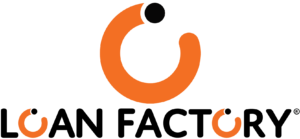💼 A Complete Guide to Mortgage Options for Self-Employed Buyers in the U.S.

– What if your reported income is low or your earnings are inconsistent?
If you’re working as a self-employed professional or freelancer in the U.S. without a W-2, getting a mortgage might feel a bit more complicated compared to salaried employees. But the good news is—there are many mortgage programs specifically designed for self-employed borrowers. Here’s a summary of the most common options available when purchasing a home.
1️⃣ Full Doc Mortgage – Traditional Mortgage
- Required Documents:
2 years of tax returns (1040), Profit & Loss statement, Balance Sheet, 2 years of personal and business tax filings - Pros:
Low interest rates, standard loan program - Cons:
Loan amount may be limited if your reported income is low
✅ Best for:
Borrowers who fully report their income on taxes
2️⃣ Bank Statement Loan – Based on Bank Deposits
- Required Documents:
Business or personal bank statements from the past 12 or 24 months - Pros:
Even with low reported income, your actual deposit history is used to calculate income - Cons:
Slightly higher interest rates than traditional loans
✅ Best for:
Borrowers with strong cash flow but low taxable income
3️⃣ P&L Only Loan – Based on Profit & Loss Statement
- Required Documents:
12-month profit and loss statement prepared by a CPA - Pros:
No need to provide tax returns or bank statements - Cons:
Higher interest rates and limited lender availability
✅ Best for:
Borrowers with stable businesses and CPA support
4️⃣ DSCR Loan – For Investment Properties Only
- Required Documents:
Approval based on the Debt Service Coverage Ratio (DSCR), which compares rental income to mortgage expenses - Pros:
No income documentation required (personal income not considered) - Cons:
Only applicable for investment properties, not primary residences
✅ Best for:
Self-employed borrowers purchasing rental or investment real estate
5️⃣ FHA Loan – Government-Backed Loan for Lower Credit
- Required Documents:
2 years of tax returns, W-2 or Schedule C, credit score 500+ - Pros:
Low down payment (3.5% for 580+ credit score; 10% down for 500+ credit), flexible approval criteria - Cons:
Mortgage Insurance Premium (MIP) is required; loan amount limits apply
✅ Best for:
First-time buyers with lower credit and smaller down payments
6️⃣ Commercial Real Estate – SBA Mortgage (Owner-Occupied Property)
- Required Documents: 2–3 years of business financials + SBA-required documents
- Pros: Long-term financing (up to 25 years) with a low down payment (10%) if the business occupies the space
- Cons: Lengthy application process; at least 51% of the property must be owner-occupied
✅ Recommended for: Business owners looking to combine workspace and real estate investment
✨ Final Tip:
The key to getting approved as a self-employed borrower is flexibility in income verification. It’s not just about tax returns—lenders also consider bank statements, CPA-prepared P&Ls, and rental income when evaluating your application.
Written by: Terry Kwon
📞 Phone: (631) 624-4480
Terry Kwon / Licensed Loan Originator / NMLS #2620208
Loan Factory / NMLS #320841

